The must-know steps to keeping your white pet safe from dangerous sunburn
January 05, 2019White-haired cats and dogs are often striking in appearance, but their beautiful coats come with a lot of responsibility.
Snowy animals are prone to a number of health complications, with sunburn and skin cancer particularly common. For some animals, like Barry the cat, the consequences of excessive sun exposure can be lifelong.
Initially bought to RSPCA Port Lincoln as a stray, Barry came into our care with pre-cancerous tips to his ears. Our veterinarians had no choice but to remove the tips of Barry’s ears to stop the cancer spreading, giving him his trademark teddy bear ears. Happily, Barry was adopted into a forever family after recovering.
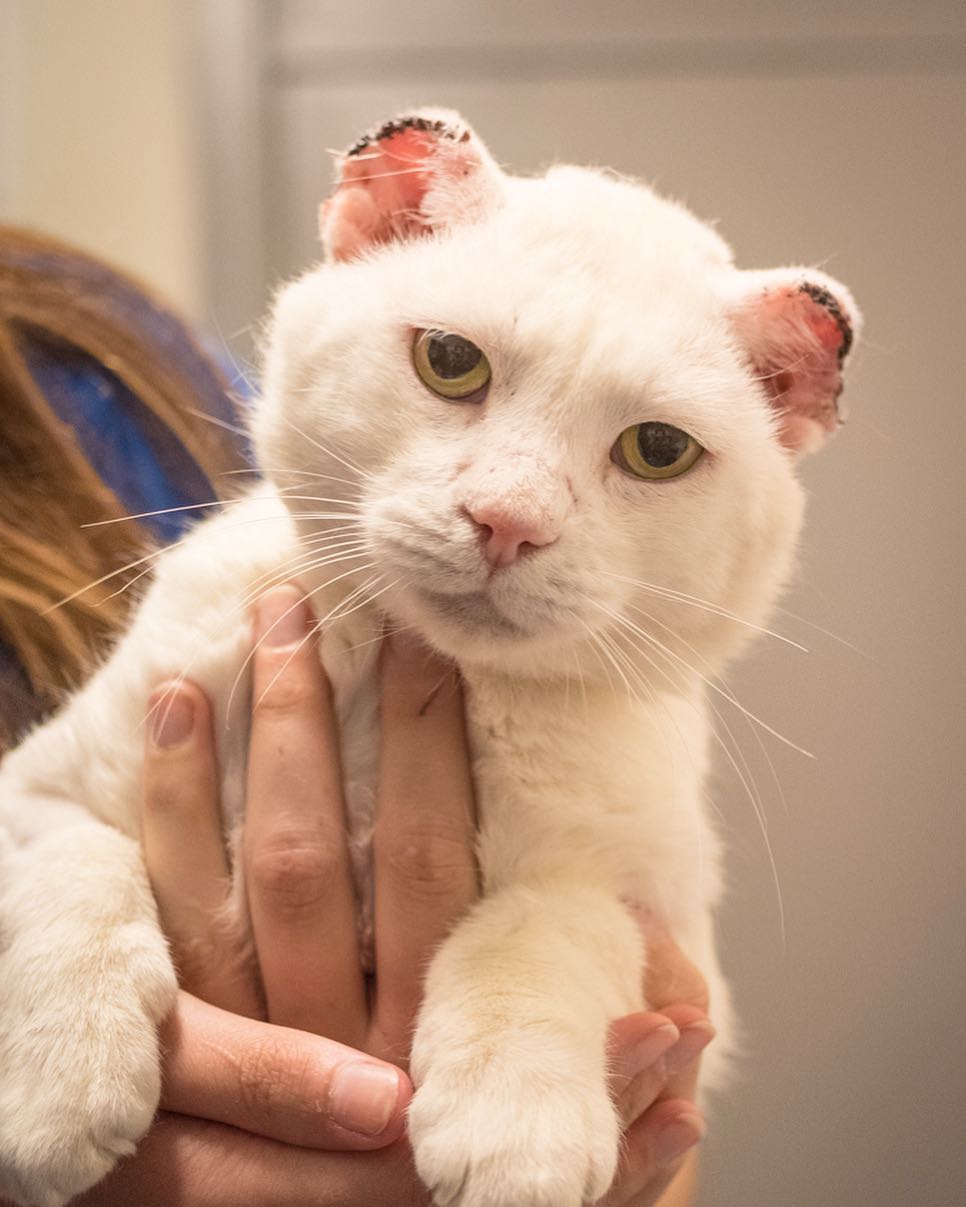
The good new is conditions like these are often preventable with the right attention and care. The easiest way to protect your snow-white pet is to keep them indoors, safely protected from South Australia’s harsh sun.
But if your pet will be heading into the great outdoors, read on for our tips on keeping them safe.
Protect your white-haired pets from sunburn
Keeping your cat and dog safe from the sun could mean the difference between life and death. Many dogs and cats with white, thin or no hair can suffer from severe sunburn due to the nature of their skin.
Severe and continued sunburn can lead to more serious health implications later in life for both humans and animals, a fact that is often overlooked.
Sunburn prevention
Like humans, slip-slop-slapping is a necessity and very much encouraged as a precaution to prevent your white-haired, or sensitive skinned animal from experiencing painful sunburn.
We recommended using sunscreen on your animal’s nose, belly, groin areas, tips of the ears and any area where the fur is thin or non-existent, as this is generally where most of the sun damage occurs. These Petkin Doggy Sunwipes are suitable for both dogs and cats and are a simple way to protect your pet’s skin.
A wide range of hats and caps are also available online for cats and dogs, but some animals can become distressed wearing them. It is important not to force your animal to wear anything that may cause them irritation.
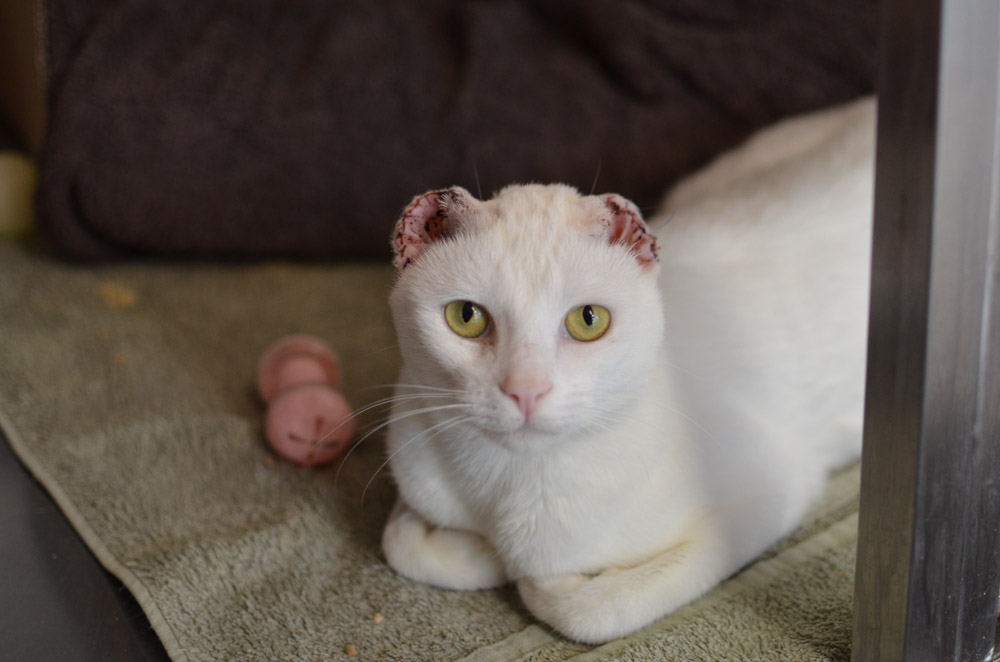
Sunburn treatment
If your dog or cat has suffered from severe burns, they may exhibit symptoms such as visibly red and irritated skin, scabs, excessive panting or heat exhaustion. In the worst cases, your pet may need intravenous fluid therapy to help reverse or prevent dehydration, although this does little to help severe cases of sunburn.
Extreme sunburn can be fatal – it’s essential to seek veterinary treatment. Your vet may apply cold compresses to relieve your pet’s pain, which limits any further damage and helps regulate the temperature of their skin.
In some cases, your vet may advise the use of prescribed medication such as a cortisone ointment. Cortisone combats inflammation and helps progress the healing of any scabs or wounds to the skin. Most medications will fight off bacteria or infection, should they spread. Antibiotics may also be required.
The danger of skin cancer for white cats and dogs
In addition to sunburn, pure white cats and dogs are also at risk of developing skin cancers, normally around the ears, nose and eyelids, where the hair is thin or non-existent. The most common form of skin cancer suffered by white cats is squamous cell carcinoma, a cancer that can be painful, disfiguring and ultimately fatal, if left untreated.
For some animals, like Hannah the cat, the consequences of skin cancer can be lifelong.
Hannah was surrendered to our inspectors in 2015, with both ears showing signs of skin cancer due to prolonged sun exposure. Our RSPCA Lonsdale veterinary team had to perform a double pinnectomy surgery – which involved removal of the affected areas of the ears. Luckily, though, Hannah was adopted soon after and went on to live the happy life she deserves.
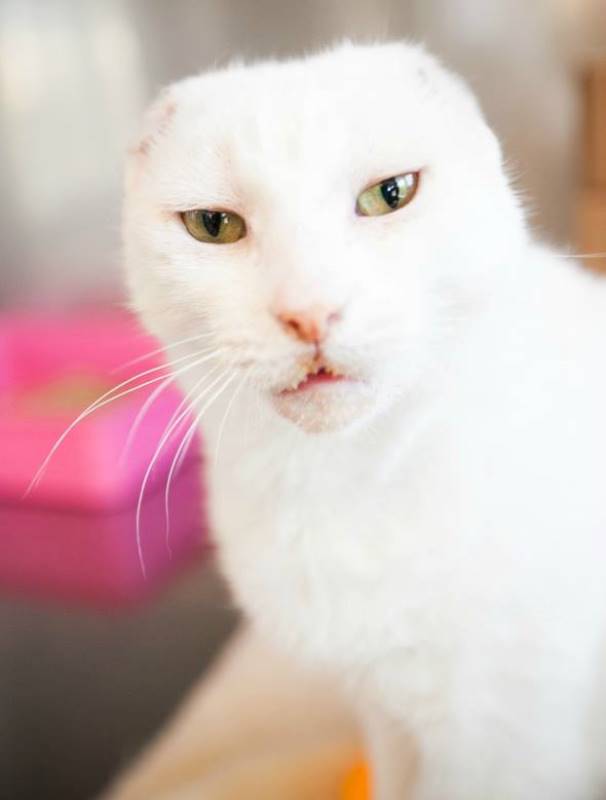
Skin cancer prevention
As detailed above, sun wipes and sun hats are affordable options for responsible pet owners to explore, but some animals will not tolerate having cream applied or wearing hats. Another preventative measure is to restrict the time your white-haired cat or dog spends in the sun.
Keeping them happy and stimulated inside is important and can be easily achieved with the aid of toys, games and one-on-one attention. Kongs are great for active dogs with active brains. Stuffing them with your animals favourite treat can keep them occupied for hours without you. For cats, scratching posts and toys are great ways to keep bored at bay during the day.
Allowing them outside after the sun has gone down or early in the morning, before the heat has set in, can prevent your pet from going stir-crazy, while simultaneously avoiding the high-risk UV rays. See the RSPCA knowledge base for more tips on keeping your animal entertained indoors.
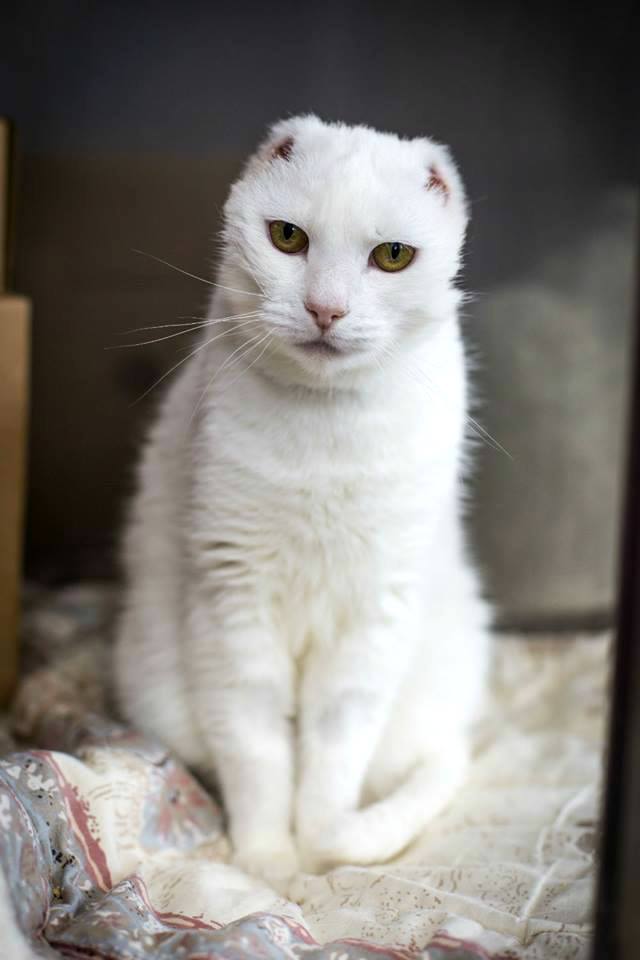
Skin cancer treatment
The three main cancers commonly diagnosed in dogs and cats are melanomas, squamous cell carcinomas and mast cell tumors. Early detection is key to a successful diagnosis, treatment and outcome.
Melanomas are most commonly located on the mouth, lips, toenail beds or pads of dogs and cats.
Squamous cell carcinomas are tumors often found in the abdomen or genital areas, and are raised and firm when touched. They are also commonly found on the feet of dogs, making them limp.
Mast cell tumors are the hardest kind to identify. They are slow-growing and are often first noticed as inflamed areas on your pet’s body. They are most commonly found on the legs or trunk and can cause your pet extreme discomfort.
A skin cancer diagnosis can often mean surgery. This can be costly and painful, with follow-up radiation or even chemotherapy sometimes required. Unfortunately, removing a cancer such as a melanoma is no guarantee your pet’s health is out of the woods. Many cancers spread and can return more aggressively at a later time.
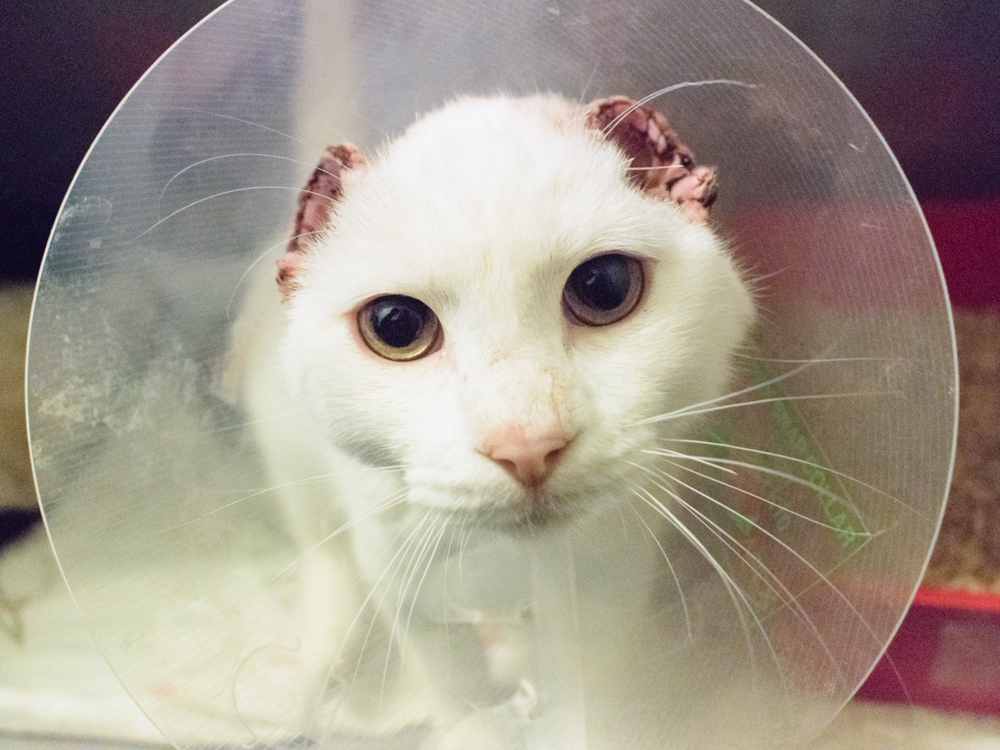
As you can see, prevention is most definitely better than cure. Ensuring your white-haired beauty is sun safe, whether they be an inside or outside pet, is up to you.
Want more tips and tricks on best-practice animal care? Head over here for more stories.




You say These Petkin Doggy Sunwipes are suitable for both dogs and cats, yet when I have looked up that product it states not recommended for use on cats?
Hi Kayla, they are suitable for both dogs and cats :) Thanks.
Thanks for this article, we just had our cat’s ears removed. She had been found in a colony prior to us adopting her and they were all red and burnt and there was a large mole. I had no idea it was such a real danger for white pets and I can imagine most people wouldn’t know either.
Hi, this may sound a bit radical, but would it be possible to permanently dye the fur on white cat’s ears a darker color, like black? Would that help protect them if it was a pet-safe dye (I don’t know if that exists)? Just trying to find creative solutions to protect my white kitty!
Hi Alicia, we wouldn’t recommend that as your cat’s fur is still white underneath. We recommend following the tips in this post instead :)
Hi, we have recently adopted three gorgeous fur babies from the RSPCA. Would you kindly advise if Filta-Bac sunfilter cream is safe for cats. I have been reading conflicting reports on-line about products containing Zinc Oxide being harmful to cats. Many thanks.
Hi Joanna, thanks for choosing the adoption option. Filta-Bac sunfilter cream can be used on cats, but since cats can be sensitive, we recommend seeking veterinary advice about the specific needs of your kitty. Thank you.
My grey & white cat got squamous cell carcinoma on his ear nose and lower eyelid be very careful of any small scratches or sores that don’t heal in a normal amount of time that seem dormant,be insistent to your vet or try another vet. The sores got started to spread but was a bit late for an easy removal,He had to get an ear his nose and an eye & eyelid removed at the large vet hospital at huge expense and we are not sure if he’s in the clear as yet. Be insistent you know your cat best!
Hi, I have a white indoor kitten that loves laying in a window that gets a lot of sunlight. Should I put sunscreen on her when she does this?
Yes Karen that’s why I looked this up too cos I noticed my cat is lying in burning sun through the glass and how to protect him.
I have an indoor only white cat but he loves sitting in sun patches coming through the window. Is this just as dangerous? It would be impossible to stop him sitting in it, even if i pulled the blinds during the day, he would pull them back and squeeze behind when I’m at work.
Hi Isla, we understand it can be hard to keep an eye on your cat 24/7. You can always take precautionary measures to protect your furry friend! Here is a link to a great suncare product for both cats and dogs. https://www.petbarn.com.au/petkin-doggy-sunwipes-20pk?gclid=EAIaIQobChMI39Kdo-jE2QIVyAgqCh1HkgYWEAQYAiABEgIlCvD_BwE
We have a light-colored cat with sunburned ears. Vet care is prohibitively expensive. Is there any cortisone ointment or anything else you would suggest for at-home treatment?
Hi Devra, looking after light-coloured cat breeds can be tough! You can always browse our online petivlle store for products. Here is a link to our site https://rspcapetville.com.au/
Hi,my name is Jim and I recently got a white little bully and her eyes are getting irritated / burned from the sun.i was told to put eyeliner on her eyes,if so does it make a difference if it’s white or dark like black
Hi Jim it can be hard owning an animal who suffers from sunburn so frequently. I would strongly advise against putting any products on your dog’s eyes. If possible try to lessen the time they spend outdoors, particularly during the warmer months. If they get reckless inside there are numerous enrichment toys you can buy to keep them entertained for hours on end. If she continues to suffer from health issues I would recommend reaching out to your local vet for advice and take her in for a check-up.
I have a rag doll who has a mostly white but thick coat – should I use wipes all over her coat or just the nose, ears etc that are exposed to the sun?
Hi Sam, due to the density of a rag doll’s coat you should be fine focusing on the areas directly exposed.